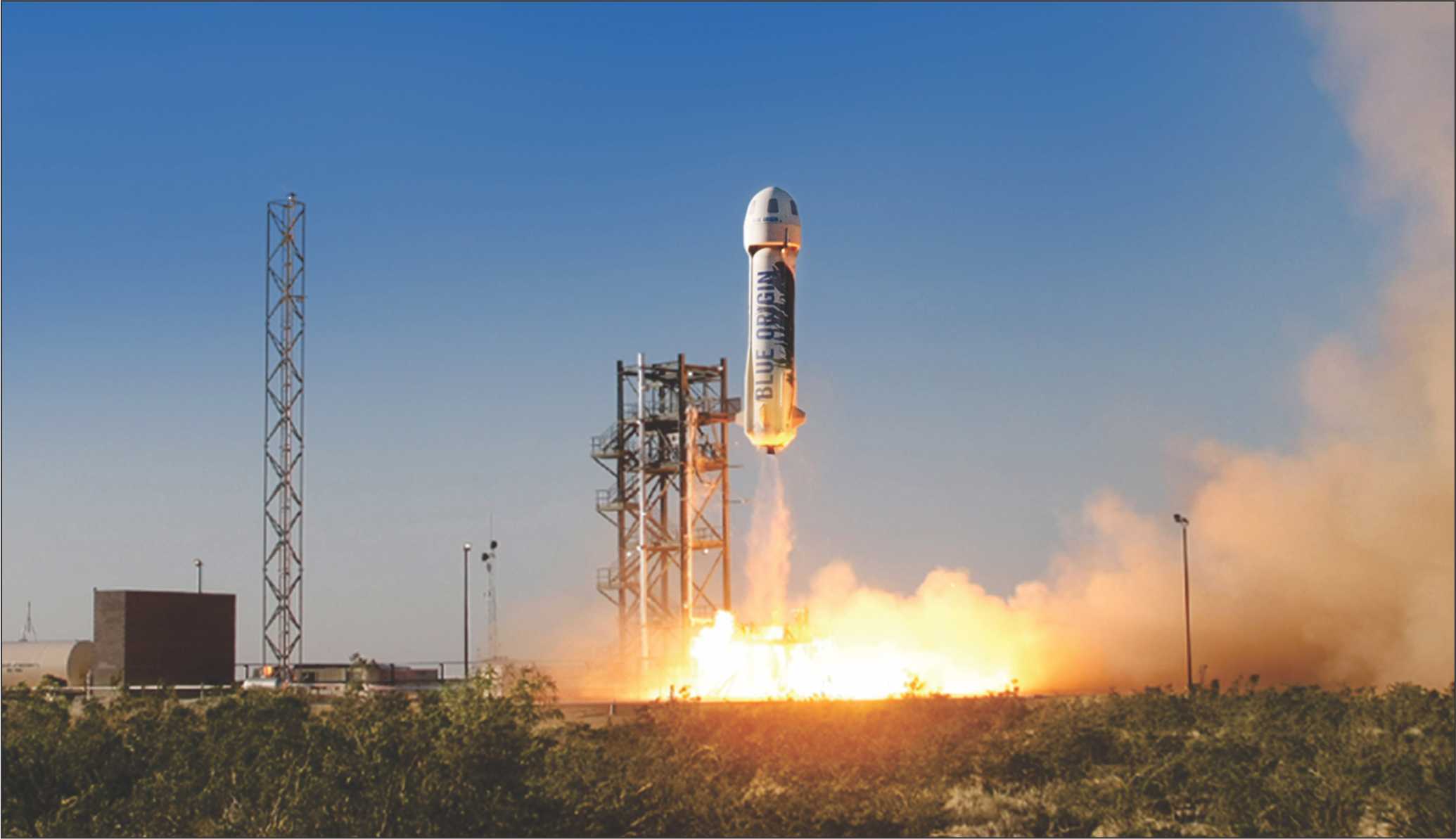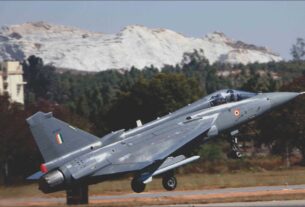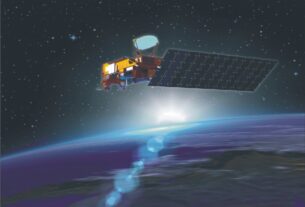Since the dawn of the space age heralded by the historic launch of Soviet Sputnik way back in October 1957, there has been a growing focus on not only reducing the cost of access to space but also making space journey a routine affair.
For one, the once only used, expendable space boosters currently deployed for orbital missions, are prohibitively costly. Moreover, readying such a vehicle for a space mission invariably involves complex and time consuming procedures. As such, reusable space vehicles are being projected as a sure shot solution for the “shortcomings and pitfalls” associated with the current genre, chemical fuel-driven space launchers. But then if the experience is any guide, a fool proof, safe and sound technology to drive such a reusable space vehicle is still quite some-time away.
The unceremonious phasing out of the first ever operational reusable space transportation system, the US space shuttle, that had a run for about four decades, clearly proves the need for a serious tweaking in of the technology used for such a space vehicle. The US space shuttle had its debut flight in 1981 had its last mission in 2011. For in the ultimate analysis, it was found to be far from safe, prohibitively costly and technologically unsound space vehicle. In fact, space shuttle is known to have killed more people than any other launch vehicle in the history of space exploration.
The US built and deployed six vehicles under the Space Shuttle programme. They were: Enterprise, Columbia, Challenger, Discovery, Atlantis and Endeavour. While Enterprise could not make it into space, Challenger and Columbia were destroyed in flight. Basically, space shuttle is composed of a plane like structure for orbit and re-entry fuelled by expendable liquid hydrogen and liquid hydrogen fuel tanks with reusable, strap on solid fuel driven booster rockets.
Meanwhile, the Defence Advanced Research Projects Agency (DARPA), has issued solicitations for the next stage of the Experimental Space Plane-1(XS-1), considered the last effort by the US Government to spur the development of an economically viable and technologically efficient reusable space vehicle. As envisaged now, the focus of XS-1 would be on the realization of a reusable first stage that coupled with an expendable upper stage would be capable of lofting payloads weighing upto a few thousand kilograms at a fraction of the cost of currently operational expandable space vehicles in that category. As Pam Melroy, Deputy Director of DARPA’s Tactical Technology Office says,” We are using a new propellant technology that greatly simplifies the design of the rocket. It is highly energetic and in all our flow testing, we continually had unplanned energetic events”.
Capability demonstration
With private players all set to play a key role in the future of US space exploration, two US based rocket companies, Blue Origin and Space X, are busy carrying out tests for realizing their own versions of reusable space vehicles.
While Space X is led by billionaire Elon Musk, Blue Origin is headed by Amazon Chief Jeff Bezos. While Space X has already used its Dragon vehicle to carry cargo to International Space Station (ISS),Blue Origin has demonstrated its New Shepard vehicle. Both Space X and Blue Origin are focussing on readying their vehicles for the future human space flight missions. Dragon has been described as a free flying spacecraft designed to deliver both cargo and humans into orbital destinations. The New Shepard system, on the other hand, has been described as a fully reusable vertical take off and landing vehicle.
Elsewhere Japan, Russia and European Space Agency (ESA) are struggling out to give a shape to their own versions of reusable space vehicles. In fact, before the disintegration of the once mighty Soviet empire, solid ground work was done by this former communist super power to build a reusable space vehicle christened Buran. However, following the disintegration of the Soviet Union, Buran met with its inglorious end.
Though China has not officially unveiled a plan for a reusable space vehicle, it is already working on the technological elements vital for realizing an operationally sound reusable space vehicle featuring cutting edge technologies. Hypersonic gliding vehicle is one instance where China is mastering some of the technologies going into a reusable space system. Earlier this year, a Chinese military expert had revealed that it is planned to develop a space plane named Shenlong which is essentially meant to reinforce China’s missile and space warfare capability. By all means, China will not find it difficult to assemble an operational reusable space vehicle for both commercial and military applications.
Indian Space Research Organization (ISRO), which is no stranger to tackling the complex technological challenges with grit and determination, has taken its preliminary but major step towards realizing India’s home grown reusable space vehicle with the successful accomplishment of the Reusable Launch Vehicle(RLV) Technology Demonstrator (TD) mission on May 23, 2016.
In this first of its kind mission, a double delta winged vehicle after its smooth take off from the first launch pad of Satish Dhawan Space Centre(SDSC) in Sriharikota island on India’s eastern coast was placed into an altitude of 56-km by a 9-tonne heavy solid fuel booster HS-9 attached to it. From this point, the vehicle managed to climb to a height of 65-km. And after successfully surviving the high temperature of re-entry, the winged technology demonstrator vehicle flawlessly glided down to the pre-determined landing spot-described as a virtual runway by ISRO-over the Bay of Bengal at a distance of 450-km from Sriharikota island. It must be said to the credit of the Indian space agency, that it was able to manage the separation of the vehicle from the booster attached to it at a specified altitude with a high degree of precision. Incidentally, this happens to be the first of series of experiments to validate a range of technologies going into the operational version of the Indian reusable space vehicles.
That after a flight lasting for about twelve minutes, during which the vehicle withstood temperature of 7000 degree Celsius, it could land smoothly into the watery stretch of Bay of Bengal was certainly no mean achievement. Since the one major objective of this mission, described as the hypersonic experiment, was on validating the capability of the vehicle to withstand the high temperature regime of re-entry, the vehicle was not recovered from the depths of the ocean. As it is, the vehicle re-entered the atmosphere at a speed of around 5 Mach. During the descent phase, small thrusters were used to navigate the vehicle into the designated landing point with a “pointed accuracy”. This successful maiden RLV-TD mission has given quickening impetus to the quest of ISRO to take the Indian space programme to its next level of growth.
Moments after this historic space mission, the first for ISRO, Prime Minister Narendra Modi hailed the successful flight of the technology demonstrator version of India’s swadeshi space shuttle with the statement that “launch of India’s first indigenous space shuttle RLV-TD is the result of the industrious efforts of the space scientists.”
The winged RLV-TD vehicle weighing around 1.75-tonne and of the size of an SUV (Sports and Utility Vehicle) is one sixth of the size of the final version of the reusable space vehicle envisaged by ISRO. The RLV-TD, involving an investment of Rs 950-million, exemplified the toil of 600 scientists and engineers of ISRO spread over a period of five years. As it is, the winged RLV-TD vehicle has been configured to serve as a test bed to evaluate various technologies including hypersonic flight, autonomous landing, powered cruise flight and hypersonic flight using air breathing propulsion.
ISRO Chairman A S Kiran Kumar was quick to point out that it was a near perfect mission about which ISRO had the full information through the telemetry system at every stage of the flight carried out from the Indian spaceport in Sriharikota island. Giving details, Kumar noted that the mission was accomplished with a fully indigenous vehicle that helped master various technologies in a single launch. In his context, David Wireman, a Dallas based Managing Director and aerospace specialist at consultancy firm Alix Partners LLP observes, “While India’s efforts is behind the likes of Space X and Blue Origin, there are still others further behind and all of the solutions remain to be proven, both technically and from a cost perspective. Although technical hurdles are quite high, it is reasonable to believe India can be successful”.
India’s success
There is no denying the fact that the maiden RLV-TD mission is yet another feather in the cap of the Indian space programme which has been sweating it out to sustain India’s leadership position in space exploration. For this mission, ISRO had developed a host of new and novel technologies including g composite movable fin, flush air data system to measure the surface pressure on the vehicle in flight, on-board computer, high resolution data acquisition system, lithium ion battery, patch antennas and radar altimeter.
As far as opening up the frontiers of cutting edge technologies to give a novel edge to the fast moving Indian space programme is concerned, not even the sky seems to be the limit for ISRO. Not surprisingly then ,ISRO is fully well convinced that with an operational reusable space vehicle in place, it would be possible to cut the cost of accessing the space by as much as ten times. For ISRO, RLV is India’s unanimous solution for low cost, reliable and on demand space access. All said and done, to realize the goal of developing an operational reusable launch vehicles, ISRO would need to further accelerate research and technology development in areas such as propulsion, materials, structures and vehicle configuration.
The message and meaning of RLV-TD flight is that India is on its way to becoming a major space power and that space is no longer dominated by US and Europe. It is not for nothing that the President Pranab Mukherjee in his message to Kiran Kumar had observed “The launch of RLV-TD is an important achievement made by ISRO that takes India into the ranks of the leading nations of the world with space shuttle capabilities.”
By all means ,the successful RLV-TD mission marks a giant leap for the Indian space programme which took in a very modest way with the launch of a 9-kg sounding rocket, way back in 1963,from Thumba Equatorial Rocket Launching Station (TERLS) at the fishing hamlet of Thumba on the outskirts of Thiruvananthapuram, currently the hub of India’s launch vehicle development programme. In a way, the successful realization of the Indian reusable space vehicle would be a shining tribute to the former Indian President and widely acknowledge space and defence scientist, Dr.APJ AbdulKalam. Kalam, who was the architect of India’s first civilian space vehicle SLV-3, had consistently advocated the need for India to reduce the launch cost by putting in place a swadeshi reusable space vehicle.
ISRO has revealed that once fully operational, the Indian RLV can be used for as many as one hundred missions. “As the complexity increases with reusability, we have to find what the optimum reusability of the vehicle is” says K Sivan, Director of the Thiruvananthapuram based Vikram Sarabhai Space Centre (VSSC),the largest Indian space establishment which spearheaded the design and development of the delta winged vehicle used for the recent hypersonic experimental flight. According to Sivan, “about 80% of the cost of a launch is on engines and structure of the rocket. Only 15 to 20% is spent on consumables like propellants. If we can recover the engine and the structure and reuse it, we can save so much” said Sivan.
Going ahead, Sivan made the point that the major focus of the maiden test of RLV-TD was on validating the re-entry and not on recovering the vehicle. In fact, the first test focused on proving some of the technologies including hypersonic flight regime, hot structure, thermal protection system and autonomous mission management. Indian space agency has rightly claimed that its RLV technology is superb in terms of recoverability. “Our focus is now on how to reduce access to space. We are forced to spend hundreds of crores of rupees on manufacturing rockets for each launch. Once RLV is operational we can cut down 80% of the cost”, said Sivan. But then at the end of the day, ISRO should try to avoid the pitfalls that made way for the phasing out of the US space shuttle.
The next critical technology that ISRO would be testing would centre round the air breathing propulsion designed to suck atmospheric oxygen during its journey through the atmosphere. Of course, in this system, liquid hydrogen will be carried by the space vehicle. “This system when implemented would help in reducing the lift off mass of the vehicle since liquefied oxygen need not be carried on board the vehicle. This would also help increase the efficiency of the rocket and also make it cost effective” said Sivan. According to ISRO , the Dual Mode Ramjet (DMRJ),the ramjet-scramjet combination will operate during the crucial Mach3 Mach 9 ascendant flight of the launch vehicle. The operational version of RLV will be about 40-metres long and would need a five km long runway for landing.
The thermal protection system of the RLV-TD mission of May 23rd was conspicuous for its 600 heat resistant silica tiles and a Carbon-Carbon nose cap to withstand the high temperature during atmospheric re-entry. The first Indian aircraft structure to fly up to Mach 5, the double delta wing RLV-TD, posed a challenger in terms of managing the high instability of a winged body mounted on a booster rocket during flight. The design of the air frame, development of mono propellant thrusters for guidance and control and advanced avionics for mission management were other challenges that were successfully met.
An operational reusable space vehicle is considered a sure shot solution to achieve low cost, reliable and on demand access to space. The strategic significance of such a vehicle lies in the fact that it could be deployed on a short notice for orbital missions. Indeed, for the Indian defence forces that would be looking at replacing or replenishing their spacecraft constellations at short notice RLV cannot but be an ideal option. In the context of India being forced to prepare for the space war, a reusable space vehicle could be major force multiplier and game changer.
The future RLV -TD missions of RLV will land on specially created runways at SDSC. Incidentally, many of the technologies being perfected for India’s reusable space vehicle would come in handy for the proposed national human space flight mission, which unfortunately, has not been given green signal by the ruling dispensation in New Delhi. Of course, ISRO on its part is currently focussing on developing some of the critical technologies for human flight mission with a view to spur the manned mission as and when it gets clearance.





